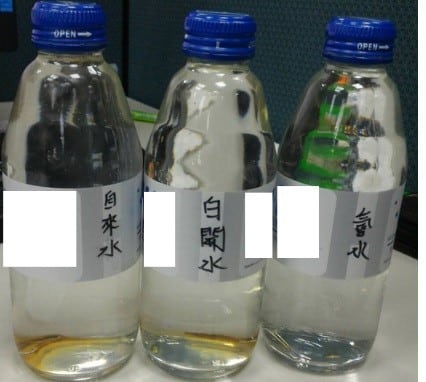低氘氫水實驗室 研究項目
- 極超高純氫氣研究—7N、8N維米製程氫氣
- 固態儲氫器研究、太空船用固態儲氫器研究
- 低氘飽和氫水製程研究及應用研究
- 低氘水用於生物實驗及製藥應用研究
- 氫氣呼吸之劑量及物理效應研究
- 低氘水用於育苗育種農業生技研究
- 氫氣用於食品科學研究
- 低氘水用於食品科學研究
- 呼吸氫氣及低氘飽和氫水之於癌症、中風、巴金森症、妥瑞症、糖尿病、心肌損傷、肝損傷、腦中風、放射治療損傷、老年癡呆、心肌硬塞、痛風、COPD、異位性皮膚炎、僵直性脊椎炎、過敏、紅斑性狼瘡及自體免疫性疾病之觀察研究
這個研究是美國的一個實驗室與我們合作的論文。我一直關注這個研究。可惜發現的結果與我們的研究不一致。為什麼這樣,可能的原因是,呼吸的濃度高(2.9%),模型損傷比較重。明顯比我們的損傷重。但這個解釋似乎牽強。最近據說在手術損傷方面也沒有發現治療效果。真不可思議。值得慶幸的是,他們證明在大鼠缺血模型有效,但沒日本報導的效果好。
Hydrogen gas is ineffective in moderate and severe neonatal hypoxia–ischemia rat models
 ,
, 
Hydrogen gas (H 2) has been shown to ameliorate brain injury in experimental adult rat focal ischemia and in amild neonatal hypoxia–ischemia (HI, 90 min hypoxia) rat model. In this study we tested H 2in moderate (120 min hypoxia) and severe (150 min hypoxia) neonatal HI rat models. We hypothesized that H 2would improve outcomes after neonatal HI by scavenging free radicals. Two hundred (200) unsexed Sprague–Dawley rats at day 10 of life (p10) underwent neonatal HI with the Rice –Vannucci model. Multiple treatment protocols were studied, including pre-ischemic treatment, intra-ischemic treatment, and post-ischemic treatment (Sham n = 32, HI n = 82, HI + H 2 n = 86). We also tested H 2in middle cerebral artery occlusion (MCAO) in adult rats (MCAO n = 9, MCAO + H 2 n = 7) for comparison. Analysis at 24 h included infarction volume, measurement of brain concentration of malondialdehyde (MDA) (an end-product of lipid peroxidation), daily weight, Nissl histology, and mortality. In moderate and severe neonatal HI models, hydrogen gas therapy (2.9% concentration H 2) was not associated with decreased volume of infarction or decreased concentration of MDA. H 2gas pretreatment (2.9%) was associated with increased infarction volume in neonatal HI. In MCAO in adult rats, H 2gas therapy demonstrated a trend of beneficial effect. Exposure of H 2gas to non-ischemic neonates resulted in a significant increase in brain concentration of MDA. We conclude that 2.9 % H 2gas therapy does not ameliorate moderate to severe ischemic damage in neonatal hypoxia–ischemia.
Keywords: H 2; Hydrogen gas; Free radical; Neonatal hypoxia–ischemia
Abbreviations: HI, hypoxia–ischemia; MCAO, middle cerebral artery occlusion; MDA, malondialdehyde; PBS, Phosphate buffered saline; TTC, 2,3,5-triphenyltetrazolium chloride; RCAO, Right carotid artery occlusion
台灣氫水實驗室 TEL:0963-210-763
email: hworker77086600@yahoo.com.tw
台灣氫水實驗室部落格:http://blog.xuite.net/hworker77086600/twblog
歡迎來電索取氫水辨認方法(防止喝到傷身的假氫水)
提供玻璃瓶裝飽和氫水供對比,免費兩瓶給你測試,收運費120元。(運費是宅配業者收去的)

